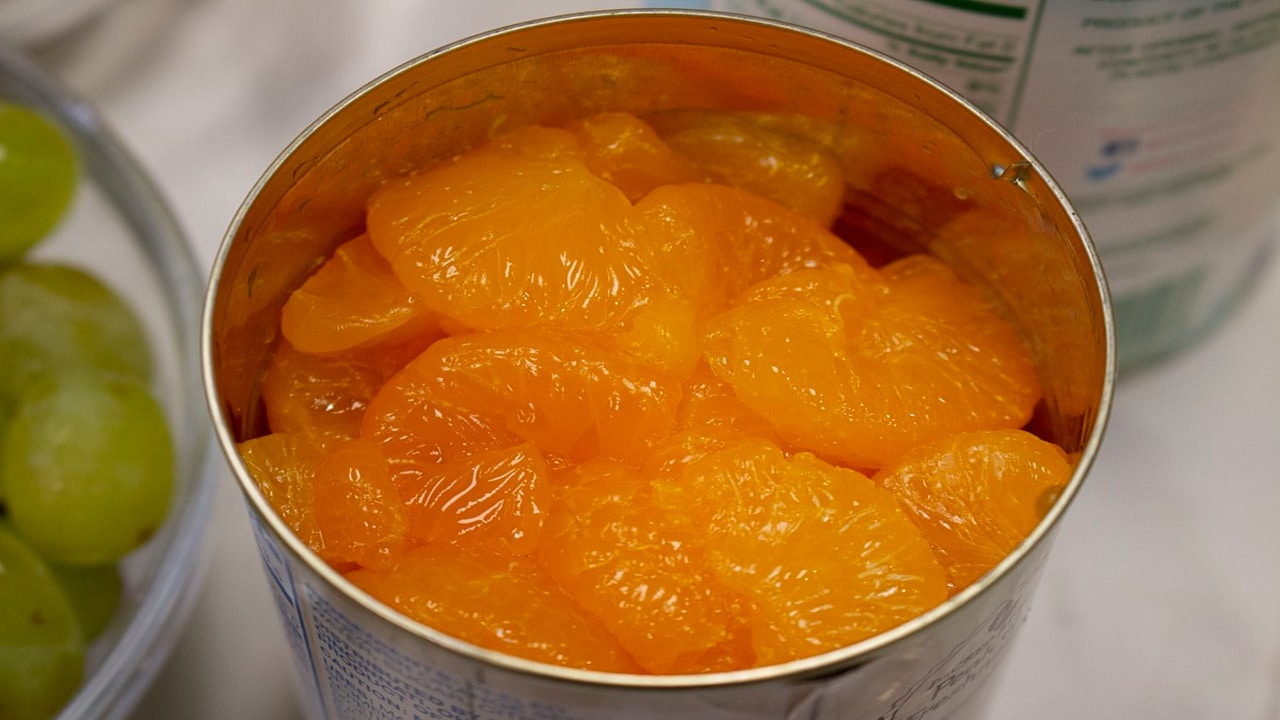24 Non-Perishable Foods to Always Have on Hand

Doomsday preppers, pandemic hoarders, and Sam’s Club regulars are steps ahead of most people if a global food shortage ever occurs. While Armageddon may not be around the corner just yet, there are still good reasons to keep non-perishable foods to hand.
Many canned goods retain their nutritional value during the canning process. The cans are mostly sealed within hours of fruits or vegetables being picked. Moreover, the sealed can is heated to remove harmful bacteria.
Canned and dehydrated produce can be part of a balanced diet and save money while still tasting good. Which products are definite shelf fillers not to be ignored?
1. Canned Soup

Who doesn’t love canned tomato soup? Americans are lucky enough to have some of the coolest canned soup varieties. Some people love the meaty versions like Progresso or Campbell’s Chunky.
Livestrong argues that canned soups make for excellent dieting food, as many fall below the 400-calorie mark. What’s not to love?
2. Honey

“Well, that’s perishable,” I hear you say, but you might be wrong. Cheap, mass-produced honey will likely congeal or crystalize. However, fresh or natural honey has a much longer shelf life.
If stored correctly, honey will last forever, says TasteOfHome. Manuka honey is one of the healthiest substances on this planet.
3. Canned Vegetables

The best thing about canned goods is how long they last — which is good news for that long-lost carrot tin you just found in the back of your cupboard. Canned vegetables may not have the nicest texture, but they make great additions to stews or purées.
Moreover, Kris Swartzendruber of Michigan State University (MSU) Extension confirms canned vegetables are low in calories, with zero cholesterol, and high in dietary fiber and folic acid.
4. Canned Fish

For some people, the canned variety is the only exposure some people have to fish — especially those living in remote locales. Fish such as tuna and salmon are rich in omega-3 fatty acids and good proteins.
Alaska Gold Seafood explains tuna often has no sell-by date because canned seafood, stashed well and left undisturbed, can last “indefinitely.”
5. Nut Butters

Medical News Today ranks nut butter as a useful protein source. Depending on the freshness of the nuts used, along with sugar and oil content, peanut butter can be a superfood. One of America’s favorite sandwich fillers has “spread” across the world. We have John Harvey Kellogg to thank for the peanut variety. Nut butter is like a survivalist’s dream: dense with protein and energy, and it lasts months.
Since then, all manners of nut butter have emerged. Almond butter has more energy than peanut butter, while sesame butter (also known as tahini) has the lowest fat content, according to VeganPeace.
6. Dried Pasta

What’s not to love about pasta? While some skeptics could argue it requires fresh sauce to work properly, others love it simply with oil, garlic, and herbs. There is a difference between dried pasta and noodles: pasta is commonly made with durum wheat and sometimes olive oil. Noodles come from common wheat.
Italian chef and TikTok influencer kucinaitaliasg, recommends buying mid-priced pasta as it soaks up sauces and oils better than cheaper varieties. Also, pay attention to the color of the dried pasta; darker yellow cooks faster and carries less nutrition and flavor than lighter or white pasta.
7. Canned Coconut Milk

Coconut enthusiast and writer TheCoconutMama swears by coconut milk, saying it can last up to five years if stored well. Even after opening, refrigerated coconut milk lasts a week.
Coconut milk makes a rich, velvety, sweet finish to curries, soups, and sauces. EatingWell writes that coconut milk may help weight management, heart health, and inflammation.
8. White Rice

One can never have too much rice spare, though rice’s type defines its longevity in the pantry. The USA Rice Federation states that “milled rice,” or the white rice familiar to many, lasts almost forever.
However, brown rice has a bran layer around each grain. This means it might only last six months in storage. “Refrigerator or freezer storage is recommended for longer shelf life,” claims the organization.
9. Rolled Oats

Where do we begin with oats? This superfood should be on every shelf — unless you happen to be allergic or a carnivore.
“Oats contain over 9 different phytochemicals!” says Jacqueline Kaminski of the National Sports Medicine Association (NASM). “They are also an extremely rich source of Vitamin E, folate, zinc, iron, selenium, copper, manganese, carotenoids, betaine, choline, and sulfur.”
10. Pulses and Legumes

Journalist Dan Buettner wrote in CNN about “Blue Zones,” a select few places across the world where people routinely live beyond 100 years. Locations such as Sardinia, Italy, Okinawa, Japan, and the Nicoya Peninsula in Costa Rica all share a common dietary trend — legumes.
Beans and pulses are packed with protein, they are cheap, and they last forever when dried and kept in the right conditions. Keeping hold of your bean is a no-brainer.
11. Powdered Milk

Hypothetically, if society were to collapse, people without their own land and livestock would soon be going lactose-free, albeit against their will.
ThinkUSADairy says powdered milk formats “retain many of the nutritional properties of their original milk source.” So, having milk powder on-hand is a smart move. If The Last of Us is to happen for real, I will be sure to stock up on Coffee Mate powder — I might then become a powdered milk lord.
12. Noodles

I believe that most households likely keep a bag of rice, but how many will have a stash of noodles? Noodles are almost as versatile as their rice counterpart, making good bedmates for stir-fries, soups, egg rolls, and curries.
Furthermore, all the world’s noodle-eating countries have different takes on the humble noodle — from Korean tteokbokki to Japanese ramen noodles. It’s possible to have a noodle arsenal in one’s cupboards with the right planning and know-how.
13. Cacao or Cocoa Powder

There are many reasons to have chocolate powder. Wellness site Naturya argues that it makes a wonderful addition to some surprising recipes, like spaghetti bolognese.
Better still, cacao powder comes with many health side effects. WebMD lists several, which include lowering blood pressure, reducing diabetes risk, and fighting inflammation. If stored correctly, this superfood can last several years.
14. Dried Fruits

Dried fruits are a huge commodity across the world, and they offer an impressive array of nutritional and culinary options. SeriousEats lists a helpful breakdown of dried fruit uses in baking and cooking.
In the Middle East, dried dates and figs are popular when breaking the Ramadan fast, as they help raise blood sugar levels. “One piece of dried fruit contains about the same amount of nutrients as the fresh fruit,” according to Healthline.
15. Nuts

Nuts make a great snack, and anyone who just eats salted peanuts is missing a trick. There are many varieties to enjoy, and they supplement a healthy diet. A GoodFood article ranks nuts by order of nutrition.
A 2018 study showed that the freezer comes in handy not only for lengthening almonds’ shelf life but also for suspending oxidation. This process slows down the deterioration of all the nutrition held within.
16. Canned Tomatoes

I always make sure we have a few tins of chopped or puréed tomatoes at hand. One can of tomatoes, an onion, and a clove of garlic are enough for a simple pasta sauce that feeds four people.
TomatoWellness lists many nutritional benefits found in tinned tomatoes, not least the antioxidant-rich lycopene, which helps protect against cancer. This cheap ingredient is a chef’s savior in busy times.
17. Long-Life Milk

Where I live in Southern Europe, one must learn to embrace long-life milk. To be honest, I can barely tell the difference between UHT (ultra-heat treatment) and fresh milk anymore. Disclaimer: it must be served ice-cold. TetraPak reasons that UHT milk may lose a few nutrients in the heating process but contains almost the same as fresh.
Moreover, long-life milk is useful if you lack the fridge space necessary for fresh milk. It also saves those irritating grocery store runs when you run out of fresh milk. Long live, long-life milk!
18. Sugar

We hear endless testimonies about the joys of a sugar-free life, but let’s get back to reality for a second. Sugar in moderation can be part of a healthy diet, especially natural sugars found in fructose and lactose, says a University of California San Diego (UCSD) review.
In any case, some families have young children who will not cooperate without sugar-laden snacks. A Utah State University (USU) blog post confirms that most store-bought sugar isg microbe-resistant and can be stored for long periods.
19. Salt

Salt is an incredible resource, historically valuable, and essential to good cooking. The only problem is that salt naturally attracts moisture. In short, chloride ions attract water molecules in the air, according to the United States Geological Survey (USGS).
Therefore, storing salt in a dry environment prolongs its shelf life. If all goes wrong and the local store is closed, head to the local beach and find a pocket of dried sea salt somewhere like Survivorman.
20. Canned Fruit

It would be nice to have access to fresh pineapples, peaches, and berries, but the seasons won’t allow this for most of us. Fortunately, canned fruits are available, and while they may contain more sugar than natural produce, they still hold enough minerals and health benefits to keep them.
Some brave people go crazy and eat fruit straight from a can. If this sounds appealing, Sugar Nutrition Resource recommends storing brands with “no added sugar.”
21. Stock Cubes

Being British, I always make sure I return to Spain with Oxo, a freeze-dried instant bouillon cube brand. Called “stock” cubes in Britain, these ingenious cooking pastels have been a lifeline for amateur chefs and busy parents for many years.
Those with incredible time-management skills (or just lots of free time) might create their own from scratch. Cooks without the patience for this effort should keep a plentiful stock of Better Than Bouillon or Knorr brand cubes.
22. Canned Chili or Instant Meals

Like me, you probably have a can of instant chili sitting in the cupboard, bought on a whim when hungry. In reality, we much prefer the real thing. However, canned chili bowls aren’t all that bad if you can add some flourishes.
Cooking platform ChowHound has a creative take on a tin of chili. Its recipe suggests topping a bowl with additions like sliced avocado, sour cream, and fresh pico de gallo.
23. Quinoa

I find it amusing that quinoa is a cheap staple across parts of Latin America, though in Britain, it made its name as a bourgeois superfood.
While some may find quinoa rather bland, it is quite healthy. Cleveland Clinic explains that one cup of this round grain contains high doses of fiber, protein, and B vitamins. Clearly, it needs help with flavor, so knowing how to prepare quinoa is crucial to enjoying it.
24. Flour

Any kitchen needs flour of some sort, and its shelf life depends on its quality. Ironically, the lower the grade, the longer its shelf life. Wholegrain flour can degrade faster than all-purpose, milled flour because of the bran content.
Well-stored flour must avoid moisture and oxygen and may last well over six months in the right environment. The Perfect Loaf says, “Flour spoilage is primarily due to two causes: hydrolytic rancidity (water-related rancidity) and oxidative rancidity (oxygen-related rancidity).”





